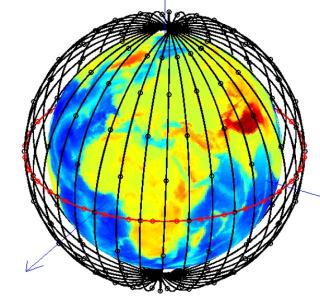Advanced Payload Architecture for GNSS

The activity scope is to trade-off GNSS payload architectures and technologies that would enable the main streams of GNSS payload Long Term Evolution (2020/2025):1)Signal Generation Flexibility/Re-configurability, 2)Power Control Flexibility, 3)EIRP Increase, 4)Performance improvements .
The activity scope is to trade-off GNSS payload architectures and technologies that would enable the main streams of GNSS payload Long Term Evolution (2020/2025):1)Signal Generation Flexibility/Re-configurability, 2)Power Control Flexibility, 3)EIRP Increase, 4)Performance improvements .A)Analyse the Galileo Signal Generation Subsystem, its requirements, performance and limitations (, e.g. technological, functional, etc.) in terms of signal generation flexibility/re-configurability. The following main aspects/trade-offs shall be addressed (as a minimum) and enabling technologies/predevelopments to be identified: -Storage and Generation of Navigation Data -Error Correction Coding, Interleaving -Formatting of the Navigation Data Message -Generation of PRN Spreading Codes -Signal flexibility in terms of signal bandwidth, centre frequency, chip and sub-carrier rates, interplex and power sharing etc. -Possibility to embed in one unit Digital Signal Modulation and analogue Up-Conversion -Possibility to implement Direct RF generation with use of high-speed DAC, Direct Digital Synthesisers (DDS), Software Defined Radio (SDR), etc. -Payload distortions self-compensation capabilitiesB)Analyse the Galileo payload high power section architecture (incl. high power amplifiers, output filters/multiplexer, navigation antenna, isolators, combiners etc...), its requirements, performance and limitations, (e.g. technological, functional, etc...) in terms of RF power allocation flexibility and EIRP increase. The following main aspects/trade-offs shall be addressed (as a minimum) and enabling technologies/ predevelopments to be identified: -Trade-off between TWTA and SSPA (e.g. GaN) amplifiers in terms of efficiency, max RF power, linearity, mass and power dissipation; -Trade-off different antenna technologies (single feed per beam, array fed reflector, direct radiating arrays etc.) in terms of gain, coverage, power handling capabilities, performance and accommodation capabilities; -Analyse at unit and architectural level power handling issues and trade-off enabling technologies (e.g. wave-guide) and architectures in terms of performance, complexity, accommodation capabilities: i) distributed amplification with spatial combination ii)distributed amplification with active antennas etc... - Analysis of flexible amplifies and its use to enable flexible power generation
